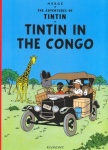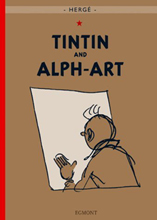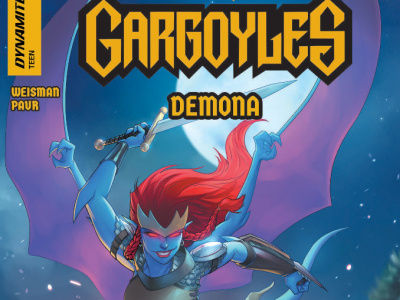
Acting on a complaint from David Enright, a human rights lawyer, Borders is removing Tintin in the Congo from the children's section of its stores in the
The original edition of Tintin in the Congo also includes plenty of scenes guaranteed to drive PETA members crazy including a famous sequence in which Tintin blows up a rhinoceros with a stick of dynamite. Realizing that many of the elements in the book didn't fit in to the post World War II world, Herge revised Tintin in the Congo twice, the first time in 1946 when color was added and then again in 1975. At the request of Scandinavian publishers Herge redrew the exploding rhino page -- the English and the Scandinavian editions are the only ones that use this redrawn page.
The controversy over the book in the U.K. touched off by David Enright's complaint has had the typical effect that such attempts at censorship engender -- sales of Tintin in the Congo have skyrocketed -- it jumped from 4,343rd place on Amazon U.K.'s bestseller list to #5 in the wake of the highly publicized controversy.
Last Gasp has imported the black-and-white facsimile edition of the original Tintin in the Congo, but in September, in recognition of the centenary of Herge's birth, Little Brown will publish the color version that Egmont published in the
In September Little Brown is also releasing two other Tintin volumes that it has never published here before, the first and last Tintin adventures. Herge's first Tintin volume, Tintin in the Land of the Soviets reflects the strong, right wing views of the Catholic paper, Le Petit Vingtieme, that he worked for -- and one doesn't have to be a Soviet sympathizer to recognize the heavy handed propaganda that makes Land of the Soviets one of the least interesting and most atypical Tintin adventure. Herge's last Tintin story, the unfinished Tintin and Alph-Art, which reflects the artist's desire to do something very different with hugely successful creation by immersing him in the world of modern art, is also unlike the other Tintin adventure, especially since it consists of sketches and scenarios and ends with Tintin in the clutches of the bad guys.
While the three Tintin titles that Little Brown plans to release in September are certainly 'must haves' for any serious Tintin fan, there is a reason that Little Brown hasn't published them until now--they simply don't represent Herge's best work. Though the early volumes do exhibit considerable energy, it is clear that the creator of Land of the Soviets and Tintin in the Congo was yet to realize the dazzling blend of humor, character and adventure that was to result in the sales of 220 million volumes of Tintin adventures worldwide -- and Tintin and Alph-Art, while interesting, is simply unfinished, it has never gone through the relentless editing and polishing process that makes Herge's mature work so much fun to read.








